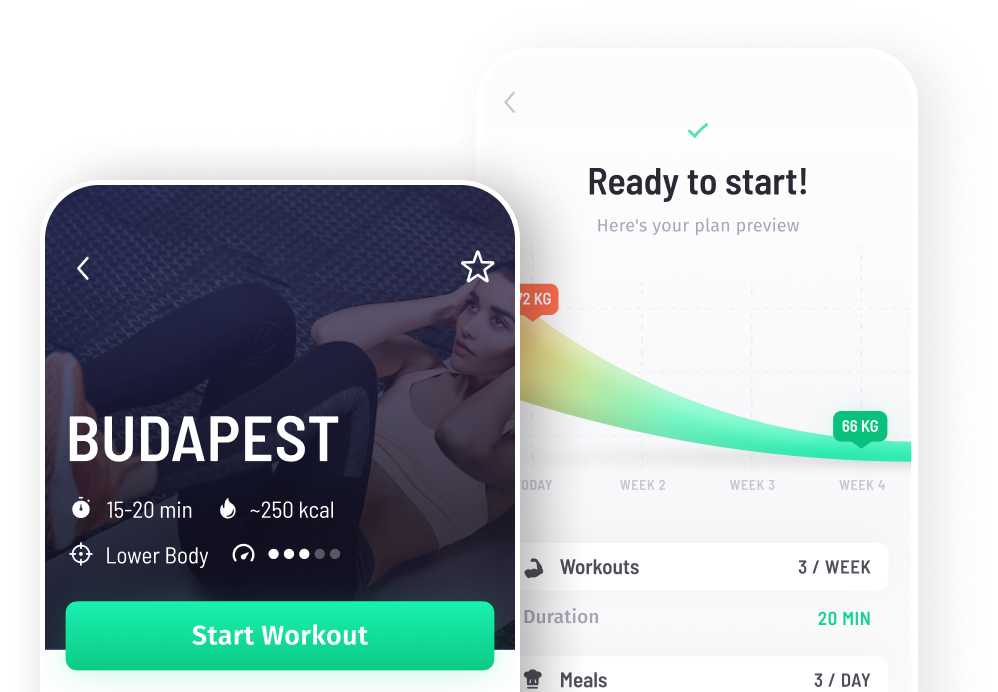You have most likely heard someone talking about functional training at the gym, and you probably asked yourself ‘what is functional training and how does it work?’ Functional training is a fun way to work out and you will feel the results of your efforts in your everyday life. It is also a sustainable way of training, you will burn calories and be more comfortable during your activities throughout the day, and you will feel more confident and trusting of your own body.
So what does this type of training look like? Let’s go on to define functional training.
What is functional training?
Functional training focuses on functional movements, which are specific movements that are based on real-world situational biomechanics. Therefore, functional training is a tailored training pattern that helps you in your daily primary patterns.
Now that we know the functional training definition, let’s discuss how it works.
How does functional training work?
There is no standard functional training workout, though there is always a focus on any combination of the following: balance, flexibility, posture, and muscular endurance. The moves feel natural and as if your body is doing what it is fully capable of doing.
You want to incorporate functional training into your lifestyle 2-3 times per week, on a consistent basis. You will become stronger and more confident in your body if you do so.
It is especially helpful to start with functional training before any other type of training. This is because you can focus on your body and which areas and movements are more difficult at the movement. Then you can focus on exercises that help you be comfortable with these movements, and build up from there.
Here are a few examples of functional training exercises and how to do them properly!
Plank
- Begin by lying flat on the floor, stomach down, with your knees fully extended.
- Bend your arms and position your elbows directly beneath your shoulders, supporting yourself with your forearms.
- Clench your fists and raise yourself up until your only points of contact with the ground are your toes, elbows, forearms, and fists.
- Maintaining a flat back, inhale and squeeze your abs and glutes as tightly as possible.
- Remain in this position for the duration of your set.
The muscles and movement you gain with planks can help you as you work around the house or do anything that engages your abdominal muscles.
Read also: What is HIIT and what are its benefits?
Pull-Up
- Hang freely on a pull-up bar with your arms fully extended.
- Cross your ankles behind you and draw your shoulder blades in.
- Slowly pull your body up towards the bar, driving your elbows down and back.
- Once you reach the bar or as high as you can pull yourself up, hold, and slowly lower yourself back to starting position.
The muscles and movement you gain with pull-ups can help you as you, for example, reach up to a high shelf and grab something or as you go to pick up a toddler.
Jump Squat
- Begin by standing upright with feet wider than shoulder width apart and toes pointed outwards.
- Bend at your both your knees and hips, while maintaining a flat back and squeezing your butt and abs.
- Keeping your knees in line over your 2nd toes, continue to lower yourself without pulling on your neck with your arms until your thighs are parallel to the ground.
- Extend your knees and explode into the air, reaching your arms up.
- Land and come back to squatting position.
The muscles and movement you gain with squats can, for example, help you climb stairs and come from sit-stand.
Lateral Lunges
- First stand with your feet shoulder width apart and arms extended by your sides.
- Pick one leg up off the floor and move it laterally as far as you can.
- Bend the knee of the leg in motion as soon as it comes into contact with the ground, while keeping the opposite leg straight.
- Pushing through the leg with the bent knee, return to a standing position with your feet shoulder width apart.
- Complete subsequent reps starting from step 2, alternating legs.
The muscles and movement you gain with lateral lunges can, for example, help you as you bend to pick up something off the floor.
Before you start with any functional training, be sure to first understand what your body can and cannot yet do. The goal is to make your body be more and more comfortable with movement and you don’t want to push it too far at the beginning.
The more you stay consistent and slowly build up your functional training, the more you will be ready to slowly add in additional weight training for targeted areas. You will feel the difference from this type of training quickly, and you’ll be happy you started as soon as you did!
Did you enjoy this article? Share it!

